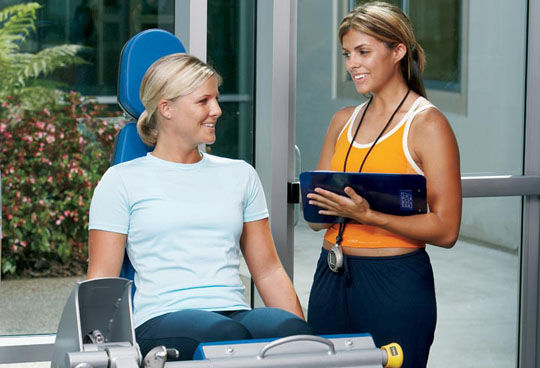
One size doesn’t fit all when it comes to designing workout programs. Sharon the new mom, who spent years before her pregnancy running marathons, will clearly be on a different level than David, the obese computer programmer who eats fast food three times a day.
Here are three things you should be doing with each of your clients to adequately assess their abilities and commitment to living a healthy lifestyle, according to the ACE Integrated Fitness Training® (ACE IFT®) Model.
1. Take a five-minute walk together.
Determining your client’s fitness level could be as easy as spending five minutes on a treadmill. Ask the client to walk on a treadmill at 3.5 mph. After five minutes, have the client stop and record his or her heart rate, and again after one minute to determine his or her recovery time. The more fit your client is, the quicker his or her recovery time should be. So six weeks down the road, when David the programmer has a lower heart rate one minute after his walk than he did when he started working out, it’s easy for him to see improvement. Showing progress helps encourage clients, and provides a quantifiable reason why they should continue training with you.
2. Ask your client about his or her weekend plans.
Building rapport with your client isn’t just about being friendly. Gauge how committed they are to incorporating healthy habits by taking an active interest in what they do outside of your sessions. Are they planning a Friday afternoon walk? Or are they going to happy hour? Take a few moments to help your clients understand that living better may mean taking small steps like walking to the store instead of driving, making a healthy meal at home instead of going out to a restaurant, or spending quality time with loved ones by going on a hike or a bike ride together.
3. Recite the Pledge of Allegiance.
Put your client on the treadmill for three to five minutes, and ask him or her to recite the Pledge of Allegiance. Increase the speed and incline a few notches, then ask the client to recite it again after two minutes have passed. When speech becomes difficult, he or she most likely reached VT1, the first ventilatory threshold. When speech becomes impossible, the client has reached VT2, the second ventilatory threshold. These two milestones can help you define what level of intensity is most appropriate for the individual abilities of your client.
To learn more about using the ACE IFT Model, which was designed to help you develop a workout plan tailored to each client’s attitude and ability, attend the Personal Training Workshop: Client Communication, Assessment and Program Design which will help you earn CECs and gain insight into keeping clients coming back.